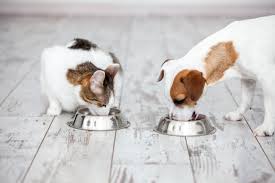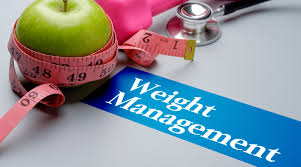Introduction
Ever wondered if you’re feeding your furry friends the right food? Just like us, dogs and cats need a balanced diet to stay healthy and happy. In this guide, we’ll cover everything you need to know about pet nutrition, from understanding dietary needs to reading pet food labels. Whether you’re a first-time pet owner or a seasoned pro, you’ll find valuable tips to make informed decisions about your pet’s diet.
Understanding Dietary Needs of Dogs and Cats

Every pet has unique nutritional requirements. Dogs and cats are no different. Knowing what they need can help you choose the best food for them.
Dogs
Dogs are omnivores, meaning they eat both plants and meat. They need a mix of proteins, carbohydrates, and fats, as well as vitamins and minerals. Protein is essential for muscle growth and repair, while fats provide energy. Carbohydrates are a good source of fiber, which aids in digestion.
Cats
Cats are obligate carnivores, so their diet should be primarily meat-based. They require higher levels of protein and certain amino acids like taurine, which are found mainly in animal tissues. Fats are also crucial for energy, and cats need specific vitamins and minerals that they can’t produce themselves.
Balancing the Diet
A balanced diet is key for both dogs and cats. It ensures they get all the nutrients they need for growth, energy, and overall health. Consult your vet to determine the best diet plan for your pet.
The Best Types of Food for Pets
Choosing the right type of food can be overwhelming. Should you go for wet, dry, or raw food? Each type has its pros and cons.
Wet Food
Wet food is often more palatable for pets, especially for cats who are picky eaters. It has a high moisture content, which is great for hydration. However, wet food can be more expensive and has a shorter shelf life once opened.
Dry Food
Dry food is convenient and easy to store. It’s also good for your pet’s teeth, as the crunchy texture helps remove plaque. On the downside, dry food has lower moisture content, which may not be ideal for pets with urinary issues.
Raw Food
Raw food diets are becoming increasingly popular. They include raw meat, bones, and vegetables. While they offer a natural diet, they come with risks like bacterial contamination. Always consult your vet before switching to a raw food diet.
How to Read Pet Food Labels
Understanding pet food labels can be tricky but is crucial for ensuring your pet gets the nutrients they need.
Ingredients List
The ingredients list is usually the first thing you see. Ingredients are listed by weight, so the first few items are the most important. Look for high-quality protein sources like chicken or beef.
Nutritional Adequacy Statement
This statement tells you if the food meets the nutritional levels established by the AAFCO (Association of American Feed Control Officials). Foods that meet AAFCO standards are considered complete and balanced.
Guaranteed Analysis
This section shows the minimum and maximum percentages of protein, fat, fiber, and moisture. Compare these values to understand the nutritional content better.
Common Mistakes in Feeding Pets and How to Avoid Them
Feeding your pet might seem straightforward, but there are common mistakes that many pet owners make.
Overfeeding
Overfeeding leads to obesity, which can cause various health issues. Always follow the feeding guidelines on the pet food package and consult your vet for personalized advice.
Feeding Table Scraps
Human food can be harmful to pets. Foods like chocolate, onions, and grapes are toxic to dogs and cats. Stick to pet-specific food to avoid any health risks.
Ignoring Age-Specific Needs
Puppies and kittens have different nutritional needs compared to adult or senior pets. Make sure you’re feeding age-appropriate food to support their growth and development.
Special Dietary Considerations
Some pets have special dietary needs due to health issues or allergies.
Allergies
If your pet shows signs of food allergies like itching or gastrointestinal issues, consult your vet. They may recommend an elimination diet to identify the allergen.
Health Issues
Pets with conditions like diabetes, kidney disease, or heart problems may require specialized diets. Always consult your vet before making any dietary changes.
Weight Management

For overweight pets, a weight management diet can help them shed those extra pounds. These diets are lower in calories and higher in fiber to keep your pet full for longer.
Homemade vs. Commercial Pet Food
Should you make your pet’s food at home or stick to commercial options? Each has its pros and cons.
Homemade Pet Food
Homemade pet food allows you to control the ingredients and ensure they’re fresh. However, it can be time-consuming and may not provide a balanced diet unless you’re very knowledgeable about pet nutrition.
Commercial Pet Food
Commercial pet food is convenient and formulated to be balanced and complete. However, some brands use low-quality ingredients, so it’s essential to read labels carefully.
Combination Diets
Some pet owners opt for a combination of homemade and commercial foods. This approach offers the best of both worlds but requires careful planning to ensure nutritional balance.
The Role of Supplements
Supplements can help fill nutritional gaps in your pet’s diet.
Types of Supplements
Common supplements include omega-3 fatty acids, probiotics, and vitamins. These can support joint health, improve digestion, and boost the immune system.
When to Use Supplements
Consult your vet before adding any supplements to your pet’s diet. They can recommend the right type and dosage based on your pet’s needs.
Risks of Over-Supplementation
Too much of a good thing can be harmful. Over-supplementing can lead to nutrient imbalances and health issues. Always follow your vet’s advice.
Seasonal Feeding Tips
Your pet’s dietary needs may change with the seasons.
Summer
In the summer, pets may need more hydration. Consider switching to wet food or adding water to dry food. Fresh fruits like watermelon can also be a hydrating treat.
Winter
During the winter, pets might need more calories to maintain their energy levels. Opt for nutrient-dense foods and consider adding a bit of extra protein to their diet.
Allergies
Seasonal allergies can affect your pet’s diet. If you notice any changes in behavior or health, consult your vet for dietary adjustments.
Signs of Nutritional Deficiencies
Recognizing nutritional deficiencies early can prevent serious health issues.
Common Signs
Look for symptoms like dull coat, lethargy, and weight loss. These can indicate a lack of essential nutrients.
Long-term Effects
Long-term nutritional deficiencies can lead to chronic health problems like liver disease and weakened immune systems.
What to Do
If you suspect your pet has a nutritional deficiency, consult your vet immediately. They can run tests and recommend dietary changes or supplements.
Dental Health and Nutrition
Good nutrition plays a crucial role in your pet’s dental health.
Dental-friendly Foods
Some pet foods are designed to promote dental health. Look for options that mention dental benefits on the label.
Chewing Benefits
Chew toys and dental treats can also help maintain your pet’s oral hygiene. They help reduce plaque and tartar buildup.
Regular Check-ups
Regular dental check-ups with your vet are essential. They can catch any issues early and recommend the best dental care for your pet.
Conclusion
Feeding your pet the right diet is crucial for their health and happiness. By understanding their dietary needs, reading labels, and avoiding common mistakes, you can ensure your pet gets the nutrition they need. If you have any questions or need personalized advice, don’t hesitate to consult your vet. For more tips and resources, subscribe to our newsletter or book a consultation with one of our pet nutrition experts today. Your furry friends deserve the best, and with the right knowledge, you can provide it.


